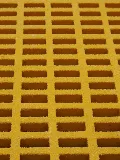loading...
- No. 9, Xingyuan South Street, Dongwaihuan Road, Zaoqiang County, Hengshui, Hebei, China
- admin@zjcomposites.com
- +86 15097380338
- Welcome to visit our website!
Cost Analysis of FRP Grating per Square Foot for Budgeting Purposes
Understanding the Cost of FRP Grating per Square Foot
Fiber Reinforced Polymer (FRP) grating has gained popularity in various industries due to its unique properties, including corrosion resistance, lightweight design, and high strength-to-weight ratio. Moreover, it's often considered a more sustainable alternative to traditional materials such as steel or aluminum. However, one of the primary concerns when choosing FRP grating is its cost per square foot. This article will delve into the factors influencing FRP grating costs and offer insights to help you make informed decisions.
What is FRP Grating?
FRP grating is a type of flooring material made from a polymer matrix reinforced with fibrous materials, like glass or carbon fibers. It is available in a variety of configurations, including molded and pultruded grating styles. FRP grating is commonly used in environments where corrosion is an issue, such as wastewater treatment facilities, chemical plants, and marine applications. Its non-conductive properties and slip resistance make it suitable for various industrial uses and public spaces.
Factors Influencing the Cost of FRP Grating
1. Material Composition The cost of FRP grating can vary significantly based on the resins and fibers used in its production. Vinyl ester, epoxy, and polyester resins all have different price points. High-performance resins, such as epoxy, offer better chemical resistance but come at a higher cost compared to standard polyester options.
2. Manufacturing Method There are two primary manufacturing methods for FRP grating — molded and pultruded. Molded grating tends to be less expensive as it is produced in bulk. In contrast, pultruded grating, known for its enhanced strength and structural integrity, typically costs more due to the intricate manufacturing process.
3. Load-Bearing Capacity FRP grating is available in various load-bearing capacities, which can influence pricing. Higher strength specifications that can support increased loads will typically result in higher costs due to the additional materials and engineering involved.
frp grating cost per square foot

4. Customization Custom sizing, colors, or other modifications (like slip resistance patterns) can add to the overall cost. If an off-the-shelf solution does not meet your needs, be prepared for an increase in the per-square-foot price for tailored options.
5. Market Conditions The price fluctuations in raw materials supply chains, along with transportation costs and logistics, can impact the overall pricing of FRP products. World events, such as supply chain disruptions or changes in trade policies, may lead to a rise in costs.
6. Installation Costs The price of FRP grating is not just based on the material itself; installation costs must also be considered. Depending on the complexity of the installation and site conditions, labor costs can vary widely. It's prudent to include both material and installation in your budget calculations when planning a project.
Average Cost Per Square Foot
As of the latest data, the average cost of FRP grating generally falls between $30 to $65 per square foot, depending on the factors outlined above. Molded FRP grating is typically at the lower end of that scale, while customized or pultruded options can significantly increase that price.
Conclusion
When exploring the cost of FRP grating per square foot, it's essential to consider a variety of influencing factors. While the base price may seem straightforward, variability in materials, manufacturing methods, load specifications, and customization can all affect your final costs. Additionally, understanding installation costs is crucial for comprehensive budgeting.
Investing in FRP grating can provide long-term benefits through reduced maintenance needs and extended service life in harsh environments. Evaluate all options thoroughly and consult with suppliers to find the best fit for your specific project needs and budget. By doing so, you can ensure that your choice of flooring or platform maximizes value and performance in accordance with your operational requirements.
-
The Rise of FRP Profiles: Strong, Lightweight, and Built to LastNewsJul.14,2025
-
SMC Panel Tanks: A Modern Water Storage Solution for All EnvironmentsNewsJul.14,2025
-
GRP Grating: A Modern Solution for Safe and Durable Access SystemsNewsJul.14,2025
-
Galvanized Steel Water Tanks: Durable, Reliable, and Ready for UseNewsJul.14,2025
-
FRP Mini Mesh Grating: The Safer, Smarter Flooring SolutionNewsJul.14,2025
-
Exploring FRP Vessels: Durable Solutions for Modern Fluid HandlingNewsJul.14,2025
-
GRP Structures: The Future of Lightweight, High-Performance EngineeringNewsJun.20,2025
